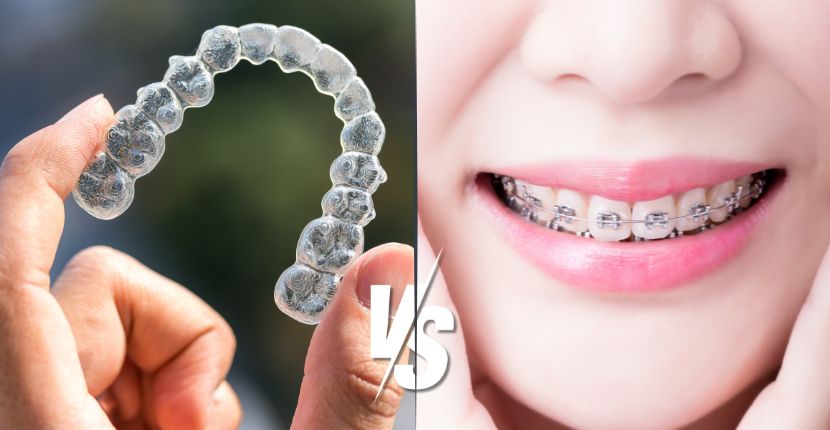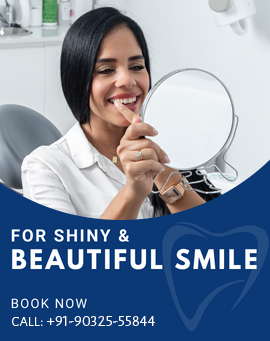10:00 AM to 8:30 PM (Mon - Sat)
10:00 AM to 2:00 PM (Sunday)
Invisalign vs Braces Which Orthodontic Treatment is Best for Your Perfect Smile

Invisalign vs. Braces: Which Orthodontic Treatment Is Best for Your Perfect Smile?
Achieving a perfect smile is a common goal for many, and orthodontic treatments like Invisalign and braces have become popular solutions to correct misaligned teeth. Both treatments can effectively straighten your teeth, but they differ in appearance, comfort, convenience, and treatment duration. Let’s understand in detail about these two procedures, based on which you decide which option might be best for you.
Invisalign: The Virtually Invisible Solution
Invisalign is a clear, removable aligner custom-made for each person. It is made using advanced 3D technology and is virtually invisible when worn. Invisalign is a popular choice for those who want discretion during orthodontic treatment.
Pros of Invisalign:
- Virtually Invisible: The clear aligners are discreet, making them popular for adults and self-conscious teenagers.
- Removable: The aligners can be removed to eat, drink, brush, and floss, making maintaining oral hygiene easier.
- Comfort: The smooth plastic aligners are generally more comfortable than traditional braces, with fewer instances of irritation.
- Convenience: Compared to braces, fewer dental visits are required, as you can switch to new aligners at home.
Cons of Invisalign:
- Discipline: Requires self-discipline to wear the aligners for the recommended 20-22 hours daily.
- Complex Cases: Aligners (Invisalign) are generally unsuitable for severe misalignment or complex bite issues.
Braces: The Time-Tested Solution
Traditional braces are metal brackets bonded to your teeth and connected by wires. The wires apply gentle pressure to move the teeth into alignment gradually. Braces have been used for decades and are reliable for correcting orthodontic issues.
Pros of Braces:
- Effective for Complex Cases: Can treat severe misalignment and bite issues.
- Constant Treatment: Brackets are fixed to the teeth, ensuring continuous treatment progress.
Cons of Braces:
- Appearance: Metal brackets and wires are noticeable, which can be a concern for some.
- Discomfort: This can cause initial discomfort and irritation as you adjust to the brackets and wires.
- Oral Hygiene: Cleaning can be challenging as food accumulates more around brackets. Cleaning the spaces between the brackets and the wires requires extra effort.
- Dietary Restrictions: Certain foods, like sticky candy and popcorn, should be avoided to prevent damage to the braces.
Which One is Right for You?
The treatment plan is curated based on your individual needs. The orthodontist will weigh the following factors before proceeding with treatment.
- Severity of Misalignment: Invisalign is suitable for mild to moderate cases, while braces can handle complex issues.
- Aesthetics: Invisalign's discreteness is appealing to those concerned about appearance.
- Lifestyle: Invisalign may be a better fit if you prefer removable aligners and easier oral hygiene.
- Cost: Braces are generally more affordable than Invisalign.
- Discipline: Invisalign requires a commitment to wearing the aligners as prescribed.
Consult an Orthodontist:
The best way to determine your smile's ideal treatment is to consult an experienced orthodontist. They will evaluate your specific needs and discuss the pros and cons of each option, helping you make an informed decision based on your priorities and lifestyle.
Remember, both Invisalign and braces treatment can effectively straighten your teeth and improve your smile. The key is choosing the treatment that best aligns with your goals and lifestyle, ensuring a comfortable and successful orthodontic journey.


